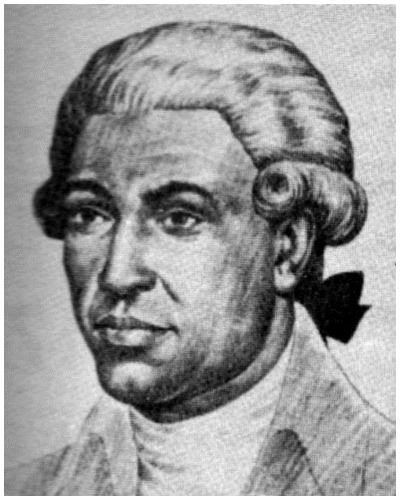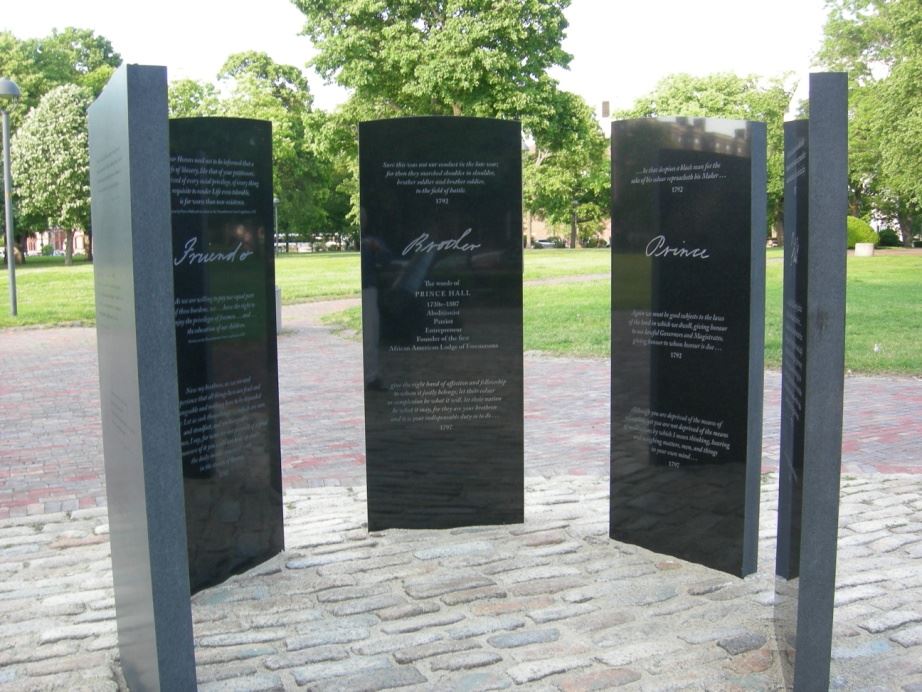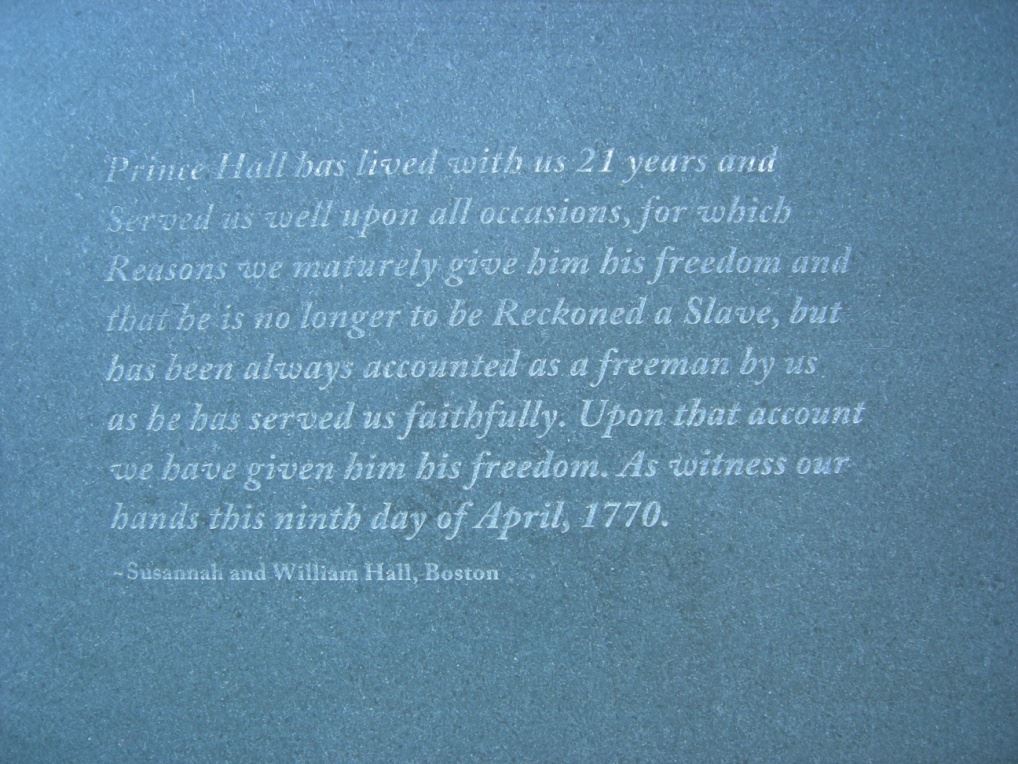
Prince Hall
The Halls of Boston
By John P. Rattigan
Special to the Boston Irish Reporter – August, 2010
May is the month of remembrance and memorials and this past spring two such events took place which opened a window upon the history of both the Irish and African-American communities of Boston. Prince Hall and William Hall were the focus of these events. Though not related, and from very diverse backgrounds, the Halls shared a common story that was historically linked to two very unique Boston institutions dating back to Colonial Boston.
In May, the five year long effort of the Prince Hall Masonic Lodge of Dorchester concluded with the unveiling of a monument on Cambridge Common in honor of its founder, Prince Hall (c. 1735 -1807). Later in the month, members of The Charitable Irish Society gathered at the Old Granary Burying Ground in Boston to lay a wreath at the grave of William Hall (1696-1771).
Prince Hall was the most famous black civic leader in the Boston area during the American Revolution and through the turn of the nineteenth century. He was recognized as the “voice of the black community” politically on such subjects as slavery, public education, and economic equality. Believed to have been born somewhere in the Caribbean, Hall was brought to the Massachusetts Bay Colony at a young age to begin a life as an indentured servant. As was customary at the time, he carried the surname of his master, William Hall. Little is known about William except that he was a leather merchant of Irish heritage. In 1766, he became the first known President of the Charitable Irish Society, which was founded in Boston some thirty years earlier. In 1770, a year prior to his death and about a month after the Boston Massacre, he and his wife released Prince Hall from his service.
In 1775 Prince Hall became a Master Mason in the Irish Constitution Military Lodge No. 441, an integrated Lodge attached to the British Army then stationed in Boston. After the British evacuated Boston the following year, Hall began efforts to provide for a separate African-American lodge. This resulted in the formation, in 1791, of the African Grand Lodge of North America of which Hall became Grand Master.
The handsome monument dedicated to Prince Hall consists of six black African marble panels inscribed with writings about his life. One panel contains a portion of the Articles of Manumission which gave Hall his freedom (see below).
Society President, Kelley Kassa, and two members of the Board of Directors, were warmly welcomed at the dedication ceremony on Cambridge Common and laid a wreath at the monument. In turn, two representatives of the Masonic Lodge were invited to attend a Charitable Irish Society Memorial observance at the Old Granary Burying Ground honoring William Hall, and the deceased members of the Society.
It was fitting that these two very different organizations, whose origins each date back to the 18th century, would come together some 200 years later to honor their shared past. As one astute Masonic Lodge member observed, “It closes the circle.”
****

Prince Hall Memorial Monument
Cambridge Common
Dedicated May 15, 2010

Monument Panel Inscription
Articles of Manumission
“Prince Hall has lived with us 21 years and Served us well upon all occasions for which Reasons we maturely give him his freedom and that he is no longer to be Reckoned a Slave, but has always been accounted as a freeman by us as he has served us faithfully. Upon that account we have given him his freedom. As witness our hands this ninth day of April, 1770.”
Susannah and William Hall, Boston